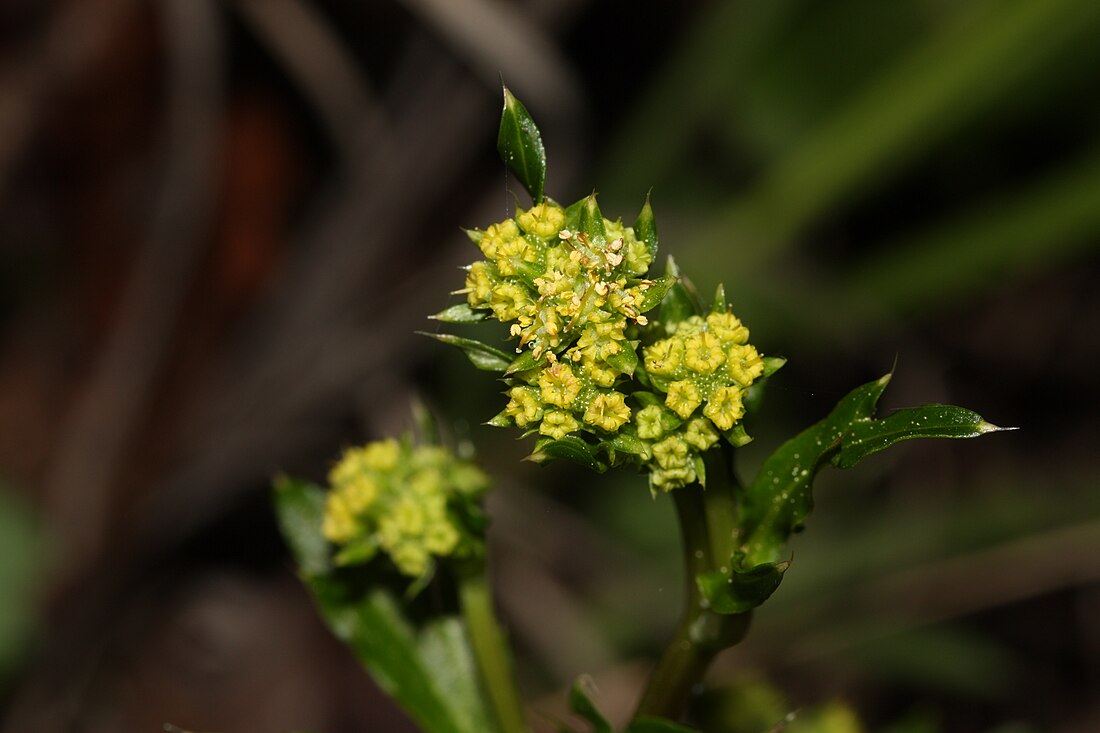Top Qs
Timeline
Chat
Perspective
Sanicula crassicaulis
Species of flowering plant From Wikipedia, the free encyclopedia
Remove ads
Sanicula crassicaulis is a species of flowering plant in the family Apiaceae known by the common names Pacific black-snakeroot[1] and Pacific sanicle.
Remove ads
Description
It is a perennial herb producing a thick stem up to 1.2 meters tall from a taproot. The leaves have blades up to 13 centimeters long which are divided into a few deep lobes and edged with small teeth. The inflorescence is made up of one or more heads of bisexual and male-only flowers with tiny, curving, yellow petals (var. tripartita flowers may range from yellow, brown, or purple). Each head has approximately five leaflike, lance-shaped bracts at its base. The rounded fruits are a few millimeters long, covered in curving prickles, and borne in small clusters.[2]
Remove ads
Distribution and habitat
Sanicula crassicaulis has an amphitropical distribution and is native to the west coast of North America and southern South America.[3]
In North America, it ranges from British Columbia to Baja California, where it can be found in many types of habitat, including mountain slopes, grassland, and woodlands.[4][5] In South America, it ranges from Coquimbo Region to Los Lagos Region in Chile, and Chubut Province, Neuquén Province, and Mendoza Province in Argentina.[6] It is also introduced to the Juan Fernández Islands, where it is invasive.[7]

Remove ads
Taxonomy
There are two varieties:[8][9]
- Sanicula crassicaulis var. crassicaulis (Poepp. ex. DC.) – Pacific sanicle – British Columbia to California; west of the Cascades and east in the Columbia River Gorge in Washington.[9]
- Sanicula crassicaulis var. tripartita (Suksdorf) H. Wolff – Three-parted Pacific sanicle – southwestern British Columbia to Klickitat County in Washington; west of the Cascades and east in the Columbia River Gorge in Washington.[9]
References
External links
Wikiwand - on
Seamless Wikipedia browsing. On steroids.
Remove ads


